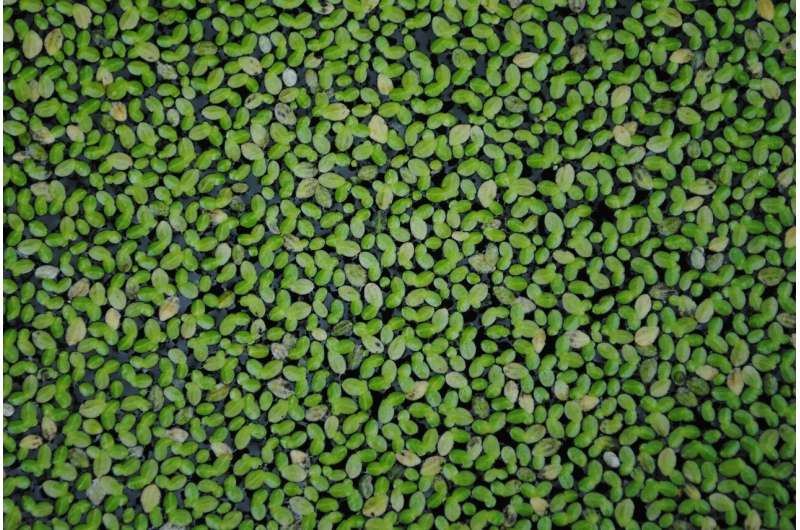This article has been reviewed according to Science X's editorial process and policies. Editors have highlighted the following attributes while ensuring the content's credibility:
fact-checked
trusted source
proofread
Study shows floating plants best at purifying wastewater

According to research by Lisanne Hendriks, an ecologist at Radboud University, azolla and duckweed are the best floating aquatic plants for purifying wastewater. The plants absorb nitrogen and phosphorus from wastewater and so render it much cleaner. The phosphorus and other pollutants in the water can then be recovered and reused. The work is published in the journal Water Science & Technology.
According to the European Water Framework Directive, the wastewater we discharge into the environment today contains excessive concentrations of pollutants like phosphorus and nitrogen. Water boards need to address this, but the conventional techniques are either too expensive or inadequate. Three water boards are now looking for a solution.
Hendriks is participating in a pilot project, called Aquafarm, which is testing new techniques. "The role of plants in purifying water is well known," says Hendriks. "Our study is trying to discover which plants are the most effective and which are not. We are also looking for ways to recover the absorbed pollutants."
Plants on and under water
Hendriks grew several species of plants in purified wastewater that only contained phosphorus and nitrogen. "We measured the quantity of the nutrients in the water beforehand, and what remained after purification by the plants. We saw that floating plants produced the best results."
Underwater plants suffered too much from algae that suppressed their growth, reducing their ability to absorb nutrients. These plants also absorbed a lot of CO2 (as much as 1,000 mg per m2 per day), which is very significant, because CO2 reduction is a key objective of the Climate Agreement, to which water boards are required to contribute.
An additional benefit is that the phosphorus and other nutrients absorbed by the floating plants could be recovered after harvesting. "Phosphorus is a finite nutrient, and we will continue to need it for products like fertilizer. It cannot be artificially produced, and at some point will run out. So it would be great if were able to recover that phosphorus from wastewater," says Hendriks. Researchers are still looking for the best way to do this.
Promising first results
"So there are at least three benefits: using floating plants for an extra purification stage makes wastewater even cleaner, phosphorus and other nutrients can be recovered from that wastewater, and it releases less CO2," continues Hendriks. "The plant matter itself could also be turned into a useful product, for example potting soil or insulation material."
The research is not yet complete, but the first results are promising. "We now want to know which method works best. For example, some floating plants are better at absorbing nitrogen, while others absorb more phosphorus. So what might the best combination of plants be? And in what order should you use them?"
The next challenge is to learn how the plants can best be integrated in the purification process. "We have only limited space in the Netherlands, so maybe we need to create a vertical system. But that's for later; first we have to continue testing the plants at work."
More information: Lisanne Hendriks et al, Polishing wastewater effluent using plants: floating plants perform better than submerged plants in both nutrient removal and reduction of greenhouse gas emission, Water Science & Technology (2023). DOI: 10.2166/wst.2023.203
Provided by Radboud University


















